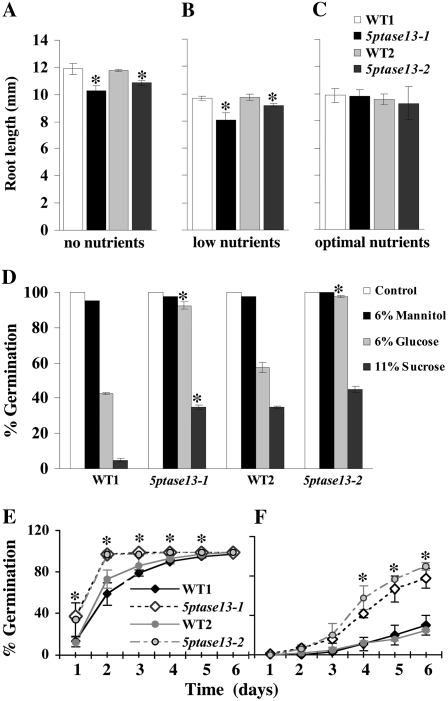Figure 8.
Phenotypes of 5ptase13 mutants. A to C, Roles of 5PTase13 in root development under different nutrient conditions. Wild-type and 5ptase13 mutant (13-1 and 13-2) seeds were grown in low light for 6 d on 0.8% agar plates and no nutrients (A), low nutrients (0.5× MS salts; B), or optimal nutrients (0.5× MS salts, 3% Suc; C). The root length for each group of seedlings was measured on days 2, 4, and 6. The results represent the root length measured after 4 d. Values are means ± se (n ≥ 40). The experiment was independently repeated two times. D, Comparison of germination of wild-type and 5ptase13 seeds grown on 0.5× MS salts and 0.8% agar that were untreated (control) or treated with 6% Glc, 6% mannitol, or 11% Suc after 7 d in the dark. Values are means ± se (n = 50). The data are representative of three independent experiments. E and F, Wild-type and 5ptase13 mutant seeds were germinated in the light for 6 d on 0.5× MS salts, 0.8% agar, and either 1 μm ABA (E) or 3 μm ABA (F). The germination rate was scored for each group of seeds starting from day 1. Values are means ± se (n = 50). Significant differences from wild-type germination were noted at days 1 to 5 for 5ptase13-1 (1 μm ABA) and days 4 to 6 for both mutants (3 μm ABA). The experiment was independently repeated two times. *, P < 0.05 compared with the wild type.

